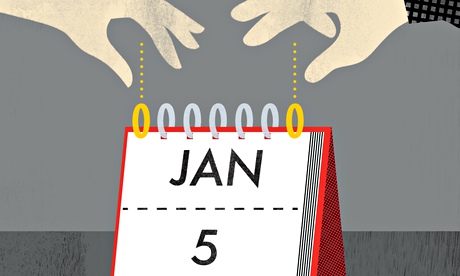
The relationship between governments and businesses is always changing. After 1945, many countries sought to rebuild society using firms that were state-owned and -managed. By the 1980s, faced with sclerosis in the West, the state retreated to become an umpire overseeing the rules for private firms to compete in a global market—a lesson learned, in a fashion, by the communist bloc. Now a new and turbulent phase is under way, as citizens demand action on problems, from social justice to the climate. In response, governments are directing firms to make society safer and fairer, but without controlling their shares or their boards. Instead of being the owner or umpire, the state has become the backseat driver. This bossy business interventionism is well-intentioned. But, ultimately, it is a mistake.
Signs of this approach are everywhere, as our special report explains. President Joe Biden is pursuing an agenda of soft protectionism, industrial subsidies and righteous regulation, aimed at making the home of free markets safe for the middle classes. In China Xi Jinping’s “Common Prosperity” crackdown is designed to curb the excesses of its freewheeling boom, and create a business scene that is more self-sufficient, tame and obedient. The European Union is drifting away from free markets to embrace industrial policy and “strategic autonomy”. As the biggest economies pivot, so do medium-sized ones such as Britain, India and Mexico. Crucially, in most democracies, the lure of intervention is bipartisan. Few politicians fancy fighting an election on a platform of open borders and free markets.
That is because many citizens fear that markets and their umpires are not up to the job. The financial crisis and slow recovery amplified anger about inequality. Other concerns are more recent. The world’s ten biggest tech companies are over twice as big as they were five years ago and sometimes seem to behave as if they are above the law. The geopolitical backdrop is a far cry from the 1990s, when the expansion of trade and democracy promised to go hand in hand, and from the cold war when the West and the Soviet Union had few business links. Now the West and totalitarian China are rivals but economically intertwined. Gummed-up supply chains are causing inflation, reinforcing the perception that globalisation is overextended. And climate change is an ever more pressing threat.
Governments are redesigning global capitalism to deal with these fears. But few politicians or voters want to go back to full-scale nationalisation. Not even Mr Xi is keen to reconstruct an empire of iron and steel plants run by chain-smoking commissars, while Mr Biden, despite his nostalgia for the 1960s, need only walk through America’s clogged West Coast ports to recall that public ownership can be shambolic. At the same time the pandemic has seen governments experiment with new policies that were unimaginable in December 2019, from perhaps $5trn or more of handouts and guarantees for firms to indicative guidance on optimal spacing of customers in shopping aisles.
This opening of the interventionist mind is coalescing around policies that fall short of ownership. One set of measures claims to enhance security, broadly defined. The class of industries in which government direction is legitimate on security grounds has expanded beyond defence to include energy and technology. In these areas governments are acting as de facto central planners, with research and development (r&d) spending to foster indigenous innovation and subsidies to redirect capital spending. In semiconductors America has proposed a $52bn subsidy scheme, one reason why Intel’s investment is forecast to double compared with five years ago. China is seeking self-sufficiency in semiconductors and Europe in batteries.
The definition of what is seen as strategic may well expand further to include vaccines, medical ingredients and minerals, for example. In the name of security, most big countries have tightened rules that screen incoming foreign investment. America’s mesh of punitive sanctions and technology export controls encompasses thousands of foreign individuals and firms.
The other set of measures aims to enhance stakeholderism. Shareholders and consumers no longer have uncontested primacy in the hierarchy of groups that firms serve. Managers must weigh the welfare of other constituents more heavily, including staff, suppliers and even competitors. The most visible part of this is voluntary, in the form of “esg” investing codes that score firms for, say, protecting biodiversity, local people or their own workers. But these wider obligations may become harder for firms to avoid. In China Alibaba has pledged a $15bn “donation” to the Common Prosperity cause. In the West stakeholderism may be enforced through the bureaucracy. Central banks and public pension funds may shun the securities of firms judged to be anti-social. America’s antitrust agency, which once safeguarded consumers alone, is mulling other aims such as helping small firms.
The ambition to confront economic and social problems is admirable. And so far, outside China at least, bossier government has not hurt business confidence. America’s main stockmarket index is over 40% higher than it was before the pandemic, while capital spending by the world’s largest 500-odd listed firms is up by 11%. Yet, in the longer term, three dangers loom.
High stakes
The first is that the state and business, faced by conflicting aims, will fail to find the best trade-offs. A fossil-fuel firm obliged to preserve good labour relations and jobs may be reluctant to shrink, hurting the climate. An antitrust policy that helps hundreds of thousands of small suppliers will hurt tens of millions of consumers who will end up paying higher prices. Boycotting China for its human-rights abuses might deprive the West of cheap supplies of solar technologies. Businesses and regulators focused on a single sector are often ill-equipped to cope with these dilemmas, and lack the democratic legitimacy to do so.
Diminished efficiency and innovation is the second danger. Duplicating global supply chains is extraordinarily expensive: multinational firms have $41trn of cross-border investments. More pernicious in the long run is a weakening of competition. Firms that gorge on subsidies become flabby, whereas those that are protected from foreign competition are more likely to treat customers shabbily. If you want to rein in Facebook, the most credible challenger is TikTok, from China. An economy in which politicians and big business manage the flow of subsidies according to orthodox thinking is not one in which entrepreneurs flourish.
The last problem is cronyism, which ends up contaminating business and politics alike. Firms seek advantage by attempting to manipulate government: already in America the boundary is blurred, with more corporate meddling in the electoral process. Meanwhile politicians and officials end up favouring particular firms, having sunk money and their hopes into them. The urge to intervene to soften every shock is habit-forming. In the past six weeks Britain, Germany and India have spent $7bn propping up two energy firms and a telecoms operator whose problems have nothing to do with the pandemic.
This newspaper believes that the state should intervene to make markets work better, through, for example, carbon taxes to shift capital towards climate-friendly technologies; r&d to fund science that firms will not; and a benefits system that protects workers and the poor. But the new style of bossy government goes far beyond this. Its adherents hope for prosperity, fairness and security. They are more likely to end up with inefficiency, vested interests and insularity.





